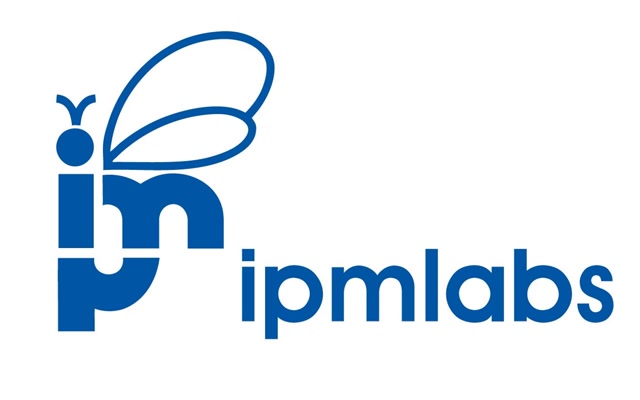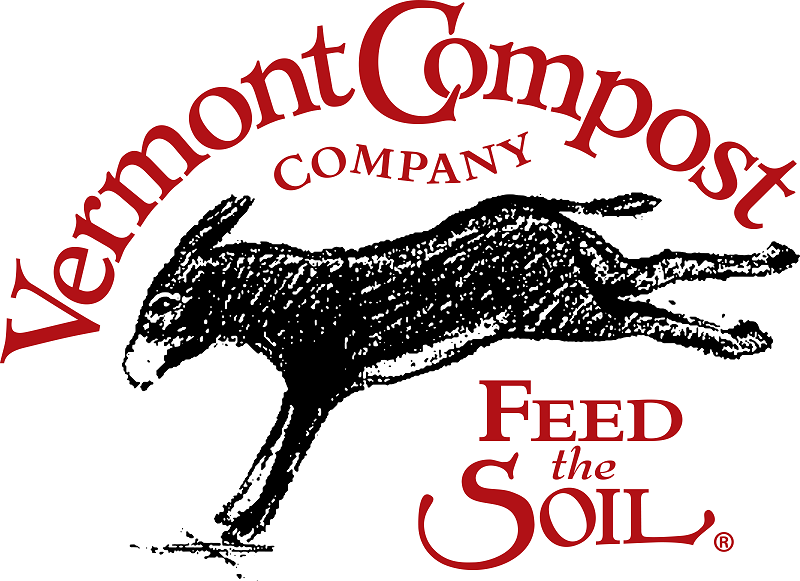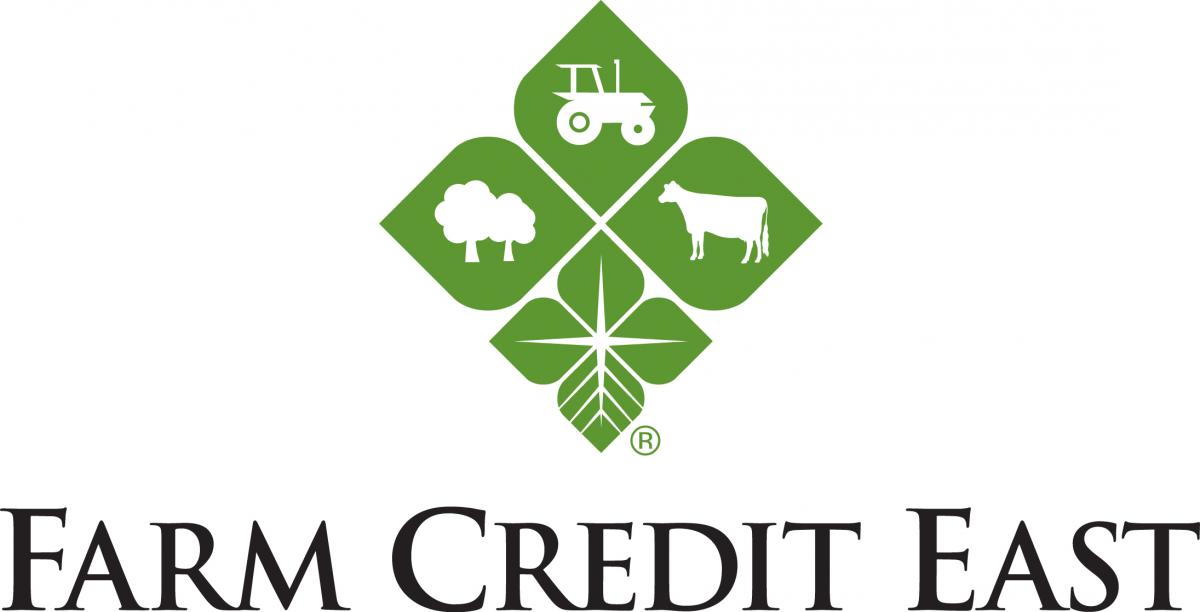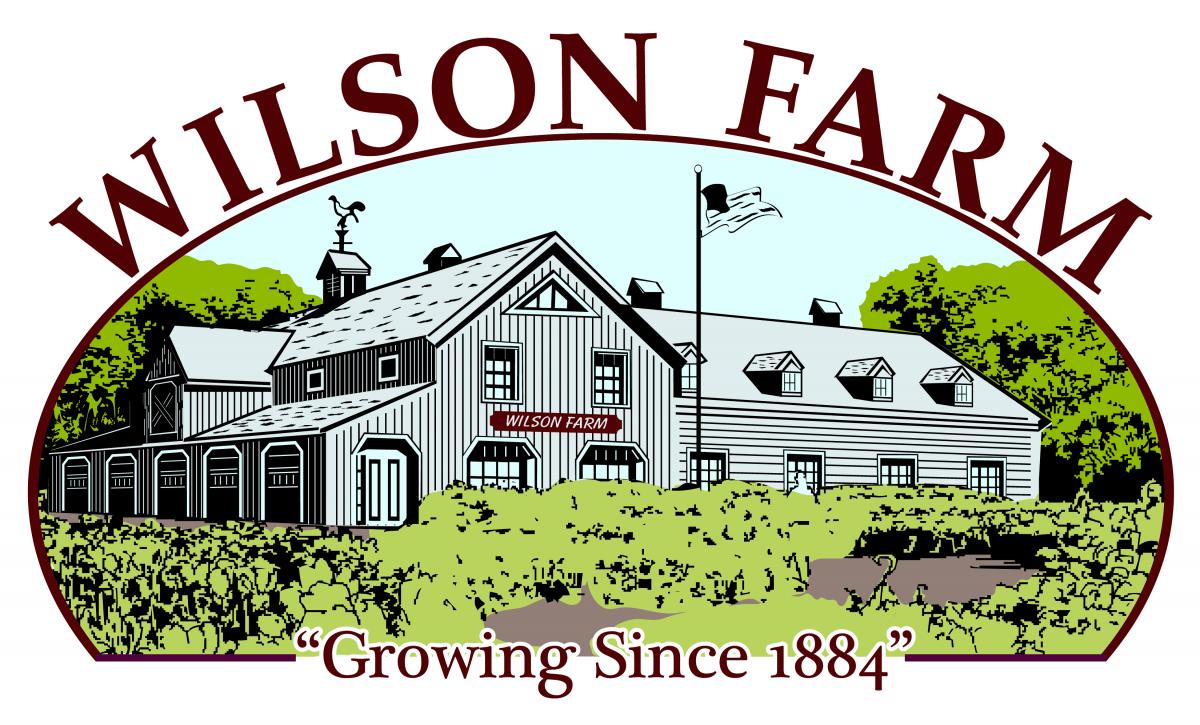To print this issue, either press CTRL/CMD + P or right click on the page and choose Print from the pop-up menu.

Crop Conditions
 Happy solstice everyone, and not-so-happy heat wave! It’s hot, hot, hot out there, and everyone is working hard to keep crops cool while not overheating themselves. Crops that just went into the ground are the first priority for watering, as they don’t yet have deep root systems that can scavenge for water further underground. More established crops can withstand a bit more heat. Strawberries continue to produce, and now snap peas are ready too. Garlic scapes have been harvested, and broccoli, cabbage, fennel, cucumbers, summer squash, and zucchini are all coming in. High tunnel tomatoes are starting to really produce and now is a good time to start taking tissue tests to determine the crop nutrient status. Collect 15-20 recently matured whole leaves—these should be 3rd or 4th from the growing point. The UMass Soil Lab is not currently accepting tissue samples, so send samples to the UMaine or Penn State soil labs.
Happy solstice everyone, and not-so-happy heat wave! It’s hot, hot, hot out there, and everyone is working hard to keep crops cool while not overheating themselves. Crops that just went into the ground are the first priority for watering, as they don’t yet have deep root systems that can scavenge for water further underground. More established crops can withstand a bit more heat. Strawberries continue to produce, and now snap peas are ready too. Garlic scapes have been harvested, and broccoli, cabbage, fennel, cucumbers, summer squash, and zucchini are all coming in. High tunnel tomatoes are starting to really produce and now is a good time to start taking tissue tests to determine the crop nutrient status. Collect 15-20 recently matured whole leaves—these should be 3rd or 4th from the growing point. The UMass Soil Lab is not currently accepting tissue samples, so send samples to the UMaine or Penn State soil labs.
Hope to see lots of you next Tuesday at Brookfield Farm here in Amherst for a field walk! We’ll hear from farm managers Kerry and Max Taylor about the new well and solar pump that they installed last year with support from NRCS, then we’ll go on a field walk to look at some insect pests and weeds and hear from Sue Scheufele and Maria Gannett from our team at UMass Extension. Please register in advance so we can order enough food to feed you all afterwards! Click here for more information and registration.
Pest Alerts
Alliums
 Onion thrips are active, and we expect their numbers to start increasing rapidly with these hot temperatures. Thrips feeding damage looks like silvery scarring on leaves and twisted or kinked leaves. The feeding injury also creates entry points for bacterial pathogens, which can cause bulb rots in storage. For management information, see the article in this issue.
Onion thrips are active, and we expect their numbers to start increasing rapidly with these hot temperatures. Thrips feeding damage looks like silvery scarring on leaves and twisted or kinked leaves. The feeding injury also creates entry points for bacterial pathogens, which can cause bulb rots in storage. For management information, see the article in this issue.
Last week we mentioned black aphids found on onion and scallion crops. This week, we identified them as spindle-nightshade aphids, a species closely related to black bean aphids. This species prefers solanaceous crops (in one scenario that we saw, the aphids were infesting eastern black nightshade, and may have opportunistically moved over to neighboring scallions when the population got too high).
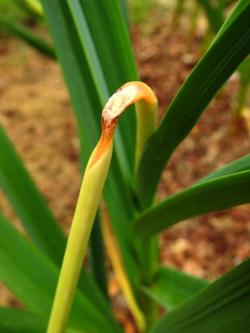
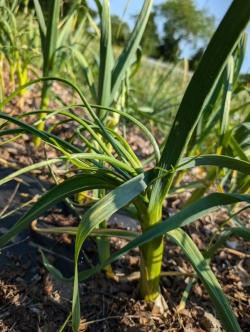 Witches brooming, the development of side shoots in garlic, was reported in garlic this week. Witches brooming is not well understood but is believed to be caused by mechanical injury to the growing bulb, winter injury, seed clove storage below 40°F, and/or water stress during clove formation. It is not clear which of those caused this case of witches brooming. Witches broomed garlic is largely unmarketable. The disorder cannot be reversed, but it is helpful to know that it is not caused by a disease or pest and so won't spread to other crops. Take care to avoid damaging heads during mechanical cultivation, and monitor seed clove storage temperatures closely to keep above 40°F.
Witches brooming, the development of side shoots in garlic, was reported in garlic this week. Witches brooming is not well understood but is believed to be caused by mechanical injury to the growing bulb, winter injury, seed clove storage below 40°F, and/or water stress during clove formation. It is not clear which of those caused this case of witches brooming. Witches broomed garlic is largely unmarketable. The disorder cannot be reversed, but it is helpful to know that it is not caused by a disease or pest and so won't spread to other crops. Take care to avoid damaging heads during mechanical cultivation, and monitor seed clove storage temperatures closely to keep above 40°F.
Garlic anthracnose: Another case of garlic anthracnose was reported this week. In garlic, this pathogen (Colletotrichum fioriniae) only infects the scapes and bulbils. C. fioriniae has a broad host range, though, including celery, tomato, pear, apple, blueberry, strawberry, and many weeds. On garlic scapes, lesions are sunken and initially tan, turning orange as the fungus produces spores. The spores are dispersed by splashing water. The fungus can survive on crop debris in the soil for several years. Remove scapes and practice good crop rotations.
Basil
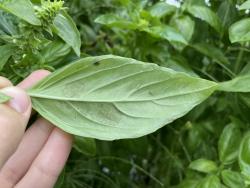
 Basil downy mildew (BDM) was reported in central New Jersey this week, so it is on its way up the east coast, although still a ways away from MA. All downy mildews are obligate parasites, which means they cannot survive outside of a living host, and so most overwinter in the southern US where their host crops are grown year-round, and then are blown northward on storm fronts in the summer. BDM is also commonly moved northward on transplants. Last year, we first saw BDM in MA in mid-July. Growing resistant varieties starting in July is the best management practice. Based on varietal responses in UMass trials, a recommended combination is to grow Prospera and Passion, and then introduce the new Prospera Active (which contains a 2nd BDM resistance gene in addition to the gene in the original Prospera) later in the season. Conventional growers can increase their protection with fungicides. Effective materials include Quadris, Reason, Revus, Orondis Gold, Orondis Opti, Ranman, and phosphorous acid fungicides. For more information on BDM-resistant basil varieties and labeled fungicides, see our article in the December 14, 2023 issue.
Basil downy mildew (BDM) was reported in central New Jersey this week, so it is on its way up the east coast, although still a ways away from MA. All downy mildews are obligate parasites, which means they cannot survive outside of a living host, and so most overwinter in the southern US where their host crops are grown year-round, and then are blown northward on storm fronts in the summer. BDM is also commonly moved northward on transplants. Last year, we first saw BDM in MA in mid-July. Growing resistant varieties starting in July is the best management practice. Based on varietal responses in UMass trials, a recommended combination is to grow Prospera and Passion, and then introduce the new Prospera Active (which contains a 2nd BDM resistance gene in addition to the gene in the original Prospera) later in the season. Conventional growers can increase their protection with fungicides. Effective materials include Quadris, Reason, Revus, Orondis Gold, Orondis Opti, Ranman, and phosphorous acid fungicides. For more information on BDM-resistant basil varieties and labeled fungicides, see our article in the December 14, 2023 issue.
Cucurbits
Cucurbit downy mildew (CDM) was reported on cucumber in New Jersey this week. CDM overwinters in the South (and potentially in areas of Canada that have widespread greenhouse cucumber production) and is blown northward on storm fronts. Last year, the first report in New Jersey wasn't until mid-July, and then we first saw it in MA in early August. There are 2 clades of CDM—one that more commonly infects watermelon, pumpkins, and squash, and another that infects cucumber and cantaloupe. We most often see CDM infecting cucumber and cantaloupe. Cucurbit growers do not need to apply any fungicides at this time. When the pathogen is reported closer to us, we will send out an alert to begin making preventative sprays to susceptible crops. For recommended materials, see Managing Cucurbit Downy & Powdery Mildews.
Striped cucumber beetles (SCB) are out in force, causing significant feeding damage in cucurbit crops, especially young seedlings. Cover new plantings with row cover to exclude beetles, or plan to protect them with an insecticide. There are a number of foliar and systemic conventional insecticides that can be used to control SCB—see our Striped Cucumber Beetle: Focus on Early Control article for details. Pyganic is the most effective material for organic growers—it must come into contact with the beetles to be effective, so good coverage is essential and multiple applications will be requred for continued control.
| Trap Location | SVB |
|---|---|
| Sharon | 6 |
| Westhampton | 0 |
| Whately | 6 |
| Spray thresholds: 5 moths/night for bush-type cucurbits, or 12 moths/night for vining cucurbits. | |
Squash vine borer (SVB) was reported at one additional trapping location this week, in Norfolk Co. (Table 1). In the next few weeks, female moths will lay their eggs at the base of thick-stemmed cucurbit crops (e.g. summer squash, zucchini, giant pumpkins, and some winter squash. Thin-stemmed crops like cucumber, watermelon and butternut squash are less habitable for the larvae). The larvae tunnel into and up the stem, destroying the plant’s vascular system and causing the plant to wilt and then die. The orange-red and black adults fly during the day and are often mistaken for a bee or wasp because of their color and shape. Pheromone traps are used to monitor adult SVB activity and time pesticide sprays; the threshold for applying a pesticide is 5 moths/week for bush-type cucurbits or 12 moths/week for vining cucurbits. Labeled conventional materials include Assail (neonicotinoid) and several pyrethroids (e.g. Brigade, Asana, Declare, Warrior, Mustang). For organic growers, spinosad (e.g. Entrust) and Bt (e.g. Dipel, Xentari) have demonstrated efficacy but must be ingested to be effective, making proper spray timing and coverage critical. Note that SVB is not listed on these labels but may be used in states that allow applications to the crop for other target pests. Sprays should be directed at the base of plants. Row cover will also exclude the moths in fields that were not infested last fall. Remove covers during flowering to allow for pollination.
Legumes
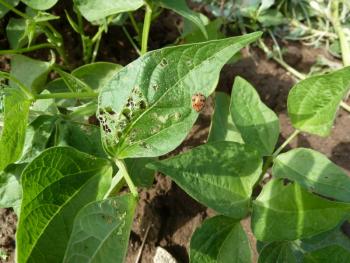 Mexican bean beetle (MBB) adults were observed in Hampshire Co. this week. Adults look like copper-colored lady beetles. They will lay clusters of eggs on the undersides of leaves within the next few weeks, and the adults and resulting larvae (soft, yellow, oblong, and spikey) will feed on bean foliage and pods. High populations can skeletonize leaves. This pest can be controlled using a parasitoid wasp called Pediobius faveolatus. When you start to see adults in your crop, contact the NJ State Department of Agriculture Philip Alampi Beneficial Insect Rearing Lab, (609) 530-4192 to order Pediobius (commercial biocontrol suppliers also carry Pediobius but are themselves supplied by the NJ Dept of Ag). They can make a recommendation on how many of the parasitoid to order based on your level of infestation, pest life stage, and acreage.
Mexican bean beetle (MBB) adults were observed in Hampshire Co. this week. Adults look like copper-colored lady beetles. They will lay clusters of eggs on the undersides of leaves within the next few weeks, and the adults and resulting larvae (soft, yellow, oblong, and spikey) will feed on bean foliage and pods. High populations can skeletonize leaves. This pest can be controlled using a parasitoid wasp called Pediobius faveolatus. When you start to see adults in your crop, contact the NJ State Department of Agriculture Philip Alampi Beneficial Insect Rearing Lab, (609) 530-4192 to order Pediobius (commercial biocontrol suppliers also carry Pediobius but are themselves supplied by the NJ Dept of Ag). They can make a recommendation on how many of the parasitoid to order based on your level of infestation, pest life stage, and acreage.
Nightshades
Colorado potato beetle (CPB) larvae are quickly getting larger and causing significant feeding damage in potatoes and eggplant in untreated fields or in areas where early instars were missed by pesticide sprays. Two pesticide applications, 7 days apart, are recommended for this 1st generation, unless the label prohibit a 2nd application. Take note of what class of pesticide you’ve used for this generation of CPB and do not use a material in the same class on the next generation. See the potato or eggplant insect control section of the New England Vegetable Management Guide for labeled materials.
Sweet Corn
European corn borer (ECB): We are past the first peak flight for ECB across the state now, so egg laying should slow down in the coming weeks. Trap captures remained fairly low this week, with a high of 8 ECB NY captured. This has been the norm for several years now—low trap captures despite damage in the field. Scout for flagged tassles and shot-hole damage in leaves. Applying a pesticide to coincide with tassel emergence will control ECB that are feeding in the whorl/tassel, before they make their way down to the developing ear. A spray is warranted if 12% or more of plants are infested in a 50-plant sample. See our Sweet Corn Insect Management Field Scouting Guide for detailed instructions on how to effeciently scout a corn field.
Corn earworm (CEW) was caught at 6 out of 11 trapping sites this week. No reports yet of CEW in developing ears, but there's not much silking corn yet so there's not much to scout. If you have silking corn, CEW trap counts will determine your spray schedule. If CEW captures are below 1.4 moths/week (averaged between 2 traps), scout silking blocks for ECB and make a pesticide application if 12% of plants in a 50-plant sample are infested.
| Nearest Weather station |
GDD (Base 50°F) |
Trap Location | ECB NY | ECB IA | FAW | CEW | CEW SPRay interval |
|---|---|---|---|---|---|---|---|
| Western MA | |||||||
| North Adams | 778 | n/a | - | - | - | - | - |
| Richmond | 640 | n/a | - | - | - | - | - |
| South Deerfield | 808 | Whately | 1 | 0 | - | 5 | 5 days |
| Chicopee Falls | 825 | Granby | - | - | - | - | - |
| Central MA | |||||||
| Leominster | 706 | Leominster | - | - | - | - | |
| Lancaster | 8 | 0 | 0 | 3 | 6 days | ||
| Northbridge | 717 | Grafton | 6 | 0 | 0 | 0 | no spray* |
| Worcester | 720 | Spencer | 3 | 0 | 0 | 2 | 6 days |
| Eastern MA | |||||||
| Bolton | 715 | Bolton | 0 | 0 | - | 0 | no spray* |
| Stow | 719 | Concord | 0 | 4 | 0 | 2 | 6 days |
| Ipswich | 677 | Ipswich | 5 | 0 | 0 | 5 | 5 days |
| - | ND | Millis | 0 | 4 | n/a | - | - |
| Sharon | 674 | North Easton | 0 | 0 | - | 3 | 6 days |
| Sharon | 0 | 0 | - | 0 | no spray* | ||
| - | ND | Sherborn | 2 | 0 | 0 | 0 | no spray* |
| Providence, RI | 706 | Seekonk | 0 | 0 | 0 | 0 | no spray* |
| Swansea | 1 | 0 | - | - | - | ||
|
ND - no GDD data for this location - no numbers reported for this trap n/a - this site does not trap for this pest * If CEW trap captures are below 1.4 moths/week, scout block for ECB and FAW caterpillars and make a pesticide application if 12% of plants in a 50-plant sample are infested. |
|||||||
| Moths/Night | Moths/Week | Spray Interval |
|---|---|---|
| 0 - 0.2 | 0 - 1.4 | no spray |
| 0.2 - 0.5 | 1.4 - 3.5 | 6 days |
| 0.5 - 1 | 3.5 - 7 | 5 days |
| 1 - 13 | 7 - 91 | 4 days |
| Over 13 | Over 91 | 3 days |
Multiple/Miscellaneous Crops
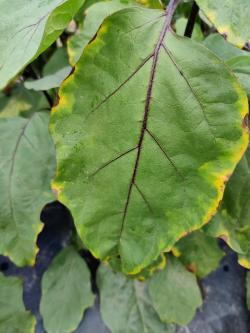
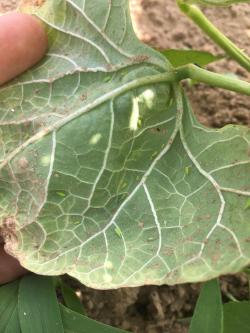 Potato leafhopper (PLH) nymphs are starting to appear in susceptible crops now. PLH has a wide host range but prefers potatoes, eggplants, and beans. Adults are ~3mm long and jump/fly quickly when disturbed. The easiest way to see them is to brush your hand through foliage, watching the air just above the crop. The adults will fly up, looking like tiny sparks. Nymphs are smaller and do not fly—they stay on the undersides of leaves and, characteristically, move around by shuffling sideways. Both adults and nymphs feed on crop foliage with piercing-sucking mouthparts, and simultaneously inject a toxin into the leaf that causes the edges of the leaves to turn yellow, then brown and crispy. This symptom is called hopperburn. In potato and eggplant, some materials registered for Colorado potato beetle (CPB) adults will also control leafhopper, including neonicotinoid foliar sprays such as Admire Pro or Assail. These and several other carbamate, synthetic pyrethroid, and organophosphate products are also registered for leafhopper in potato, eggplant, and snap beans. Sivanto (flupyradifurone) is a newer product in a novel class of chemistries, the butenolides, that works against sucking pests, including PLH. It is also labeled for CPB control. See the appropriate crop section of the New England Vegetable Management Guide for full lists of labeled materials. For organic growers, PyGanic (pyrethrin) is the most effective material. It is a contact insecticide that breaks down in sunlight, so getting good coverage of undersides of leaves is important and spraying late in the day may provide better control. Adding azadiractin as a tank-mix may improve efficacy when nymphs are present. Note that if you’re releasing the biocontrol wasp Pediobius in beans to control Mexican bean beetle, Pyganic or other broad-spectrum insecticides will kill the wasps.
Potato leafhopper (PLH) nymphs are starting to appear in susceptible crops now. PLH has a wide host range but prefers potatoes, eggplants, and beans. Adults are ~3mm long and jump/fly quickly when disturbed. The easiest way to see them is to brush your hand through foliage, watching the air just above the crop. The adults will fly up, looking like tiny sparks. Nymphs are smaller and do not fly—they stay on the undersides of leaves and, characteristically, move around by shuffling sideways. Both adults and nymphs feed on crop foliage with piercing-sucking mouthparts, and simultaneously inject a toxin into the leaf that causes the edges of the leaves to turn yellow, then brown and crispy. This symptom is called hopperburn. In potato and eggplant, some materials registered for Colorado potato beetle (CPB) adults will also control leafhopper, including neonicotinoid foliar sprays such as Admire Pro or Assail. These and several other carbamate, synthetic pyrethroid, and organophosphate products are also registered for leafhopper in potato, eggplant, and snap beans. Sivanto (flupyradifurone) is a newer product in a novel class of chemistries, the butenolides, that works against sucking pests, including PLH. It is also labeled for CPB control. See the appropriate crop section of the New England Vegetable Management Guide for full lists of labeled materials. For organic growers, PyGanic (pyrethrin) is the most effective material. It is a contact insecticide that breaks down in sunlight, so getting good coverage of undersides of leaves is important and spraying late in the day may provide better control. Adding azadiractin as a tank-mix may improve efficacy when nymphs are present. Note that if you’re releasing the biocontrol wasp Pediobius in beans to control Mexican bean beetle, Pyganic or other broad-spectrum insecticides will kill the wasps.
Contact Us
Contact the UMass Extension Vegetable Program with your farm-related questions, any time of the year. We always do our best to respond to all inquiries.
Vegetable Program: 413-577-3976, umassveg@umass.edu
Staff Directory: https://ag.umass.edu/vegetable/faculty-staff
Home Gardeners: Please contact the UMass GreenInfo Help Line with home gardening and homesteading questions, at greeninfo@umext.umass.edu.
Managing Heat Stress in Vegetable Crops
This article was compiled by the UMass Extension Vegetable Program from several blog posts written by Gordon Johnson, University of Delaware Extension Vegetable & Fruit Specialist; gcjohn@udel.edu or Gordon Johnson & Emmalea Ernest, University of Delaware Associate Scientist – Vegetable Crops; emmalea@udel.edu. See links to the original posts at the end of the article.
We’ve hit our first heat wave here in the Northeast this week, with temperatures nearing 100°F across most of MA. This is in keeping with a trend toward more frequent and intense heat waves in the Northeast as climate change intensifies. Last week, we re-published an article from Rutger’s Extension about heat stress in humans—this week, we’re continuing in this vein with information on heat stress in your crops.
Providing adequate moisture through irrigation is critical in high heat periods. However, maintaining soil moisture cannot completely compensate for extreme heat.
 Heat injury in plants includes scalding and scorching of leaves and stems, sunburn on fruits and stems, leaf drop, rapid leaf death, and reduction in growth. Wilting is the major sign of water loss, which can lead to heat damage. Plants often will drop leaves or in severe cases will “dry in place” where death is so rapid, abscission layers have not had time to form. Normally, plant temperature is just above air temperature, but plant temperature can rise to a critical level under certain conditions. The plant temperature at which tissue dies is around 115°F.
Heat injury in plants includes scalding and scorching of leaves and stems, sunburn on fruits and stems, leaf drop, rapid leaf death, and reduction in growth. Wilting is the major sign of water loss, which can lead to heat damage. Plants often will drop leaves or in severe cases will “dry in place” where death is so rapid, abscission layers have not had time to form. Normally, plant temperature is just above air temperature, but plant temperature can rise to a critical level under certain conditions. The plant temperature at which tissue dies is around 115°F.
High leaf temperatures result in heat damage to the proteins that allow the plant to photosynthesize and carry out metabolic processes. Photosynthesis rapidly decreases at temperatures above 94°F, so high temperatures will limit yields in many vegetables and fruits. Plant stomates will close earlier in the day, thus limiting gas exchange and thereby photosynthesis. Respiration increases with temperature. While daytime temperatures can cause major heat-related problems in plants, high night temperatures can also have great effects on vegetables, especially fruiting vegetables. Hot night temperatures (nights above 75°F) will lead to greater cell respiration. This limits the amount of sugars and other storage products that can go into fruits and developing seeds. Because of this increased respiration the plant expends stored photosynthates and they do not contribute to yield.
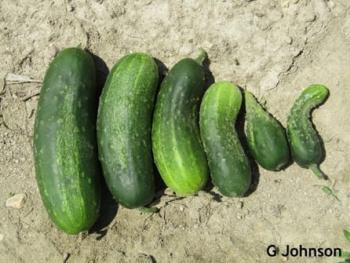 In flowering and fruiting crops, high heat will affect pollen production, often reducing viable pollen numbers. Reproductive parts in plants (anthers, stigmas) may not form properly or function properly. If pollen is transferred to stigmas, pollen germination may be reduced or halted due to heat and desiccation. Reduced pollination can result in smaller fruit or misshapen fruit. [Eds. note: High heat will also reduce pollinator activity, amplifying pollination issues.]
In flowering and fruiting crops, high heat will affect pollen production, often reducing viable pollen numbers. Reproductive parts in plants (anthers, stigmas) may not form properly or function properly. If pollen is transferred to stigmas, pollen germination may be reduced or halted due to heat and desiccation. Reduced pollination can result in smaller fruit or misshapen fruit. [Eds. note: High heat will also reduce pollinator activity, amplifying pollination issues.]
If pollination is successful, early fruit abortion may occur due to lack of photosynthates or heat damage. In heat-stressed plants, the hormone balance is affected and there is an increase in abscisic acid that is involved in these abortions.
 High soil temperatures can damage surface roots, limiting water and nutrient uptake, especially potassium. This is particularly an issue in crops grown on black plastic mulch, a common cultural practice. On black plastic mulch, surface temperatures can exceed 150°F. This heat can be radiated and reflected onto vegetables causing tremendous heat loading. This is particularly a problem in young plants that provide limited shading of the plastic. Vegetable transplants are exposed to these high soil temperatures at the soil line around the transplant hole. The stem tissue just at or above the level of the plastic may be killed at these high temperatures and the transplants will then collapse and die. Small transplants do not have the ability to dissipate heat around the stem as roots are not yet grown out into the soil and water uptake is limited. High bed temperatures under plastic mulch can also lead to reduced root function limiting nutrient uptake. This can lead to increased fruit disorders such as white tissue, yellow shoulders, and blotchy ripening in tomato fruits where not enough potassium reaches the fruit, or to blossom end rot in tomatoes or peppers due to a lack of calcium uptake.
High soil temperatures can damage surface roots, limiting water and nutrient uptake, especially potassium. This is particularly an issue in crops grown on black plastic mulch, a common cultural practice. On black plastic mulch, surface temperatures can exceed 150°F. This heat can be radiated and reflected onto vegetables causing tremendous heat loading. This is particularly a problem in young plants that provide limited shading of the plastic. Vegetable transplants are exposed to these high soil temperatures at the soil line around the transplant hole. The stem tissue just at or above the level of the plastic may be killed at these high temperatures and the transplants will then collapse and die. Small transplants do not have the ability to dissipate heat around the stem as roots are not yet grown out into the soil and water uptake is limited. High bed temperatures under plastic mulch can also lead to reduced root function limiting nutrient uptake. This can lead to increased fruit disorders such as white tissue, yellow shoulders, and blotchy ripening in tomato fruits where not enough potassium reaches the fruit, or to blossom end rot in tomatoes or peppers due to a lack of calcium uptake.
Strategies for managing heat stress
- Transplants. Control stem heat necrosis by hardening off transplants and using larger transplants with thicker stem diameters and more leaves. Make a larger hole when transplanting and water sufficiently in the hole to reduce heat load. Plant in the evening or early in the morning and avoid planting on very hot days or when long stretches of hot weather are forecast. Switch to white plastic mulch for later spring plantings; this can reduce losses significantly (white plastic will be 10-20°F cooler than black plastic mulch). White particle films (clay- or lime-based) sprayed at the base of plants over the mulch can also reduce plant losses to heat necrosis. Putting a small mound of clean sand around the plant stem will also eliminate this problem.
- Irrigation
- Overhead irrigation over black plastic mulch can help to reduce heat loads until plants have sufficient canopies to shade over the mulch.
- Fixing drip irrigation leaks and clogs. Issues with drip can include plugged emitters, leaks due to insect or animal chewing, leaky connections reducing flow, tape twisting and binding, improper tape selection or improper irrigation timing, limited well capacity, emitter spacing that is too wide for the crop or soil, and beds that are too wide for a single tape (with double rows of plants). Any of these could lead to inadequate water being applied to the crop.
- Whether using overhead or drip irrigation to water your crops, monitor fields closely and consider using soil moisture monitoring devices to better understand crop needs and to aid in detecting problems.
- Mulching. Increase reflection and dissipation of radiative heat by using white or reflective mulches or low-density, organic mulches such as straw to reduce surface radiation and conserve moisture.
- Shading. Shade cloth or netting is commonly used for this purpose. This netting comes in black, green, white, and reflective aluminum colors and is commonly used at the 20-30% shade levels. Shading is applied during the hottest periods or periods when the plant is most sensitive to heat (such as tomato fruit development). Research at the University of Maryland by Jerry Brust showed that shading tomatoes during fruiting can improve fruit quality and reduce culls. Research at the University of Georgia on peppers showed similar results with improvement in the number of marketable fruits. Kansas research showed that lettuce production was improved where white shade cloth was used.
University of Delaware research with shading of strawberries for summer production showed mixed effects with shading benefiting in some years but not in others. In 2018 and 2019 University of Delaware vegetable researchers studied the effect of shade cloth on tomato and pepper marketable yield. Treatments were no shade, 30% black, 30% Aluminet, 30% red, 22% white, 40% white. In 2018, shade treatment did not have a significant effect on pepper quality or marketable yield. In contrast, in 2019, shade treatments, especially 30% black shaded plots, produced more marketable peppers than the unshaded plots. Yield of marketable first harvest (early Aug) for 30% black was 18x higher than unshaded. Yield of marketable second harvest (Sep) was 2x unshaded. Shade did not reduce internal white tissue in tomatoes to the point of achieving marketability in the 2018 or 2019 trial. Lettuce trials were conducted with no shade, 30% black, 30% Aluminet, 30% red, 30% blue, 22% white, and 40% white. Shade cloth reduced soil temperatures by 3°C/37°F. Shaded lettuce treatments had reduced bitterness in both the 2018 and 2019 trials. For lettuce, the combination of a heat tolerant variety with shade had the greatest effect on reducing bitterness.
To summarize, there is good evidence that 30% black shade cloth applied during the hottest time period (early June through early August) improves bell pepper yield and quality. There is also good evidence that shade cloth reduces bitterness in lettuce, especially when used with a heat tolerant variety. There is some evidence that 30% black shade cloth increases tomato quality.
Original Blog Posts
- G. Johnson, Expect Heat Damage to Vegetable and Fruit Crops, July 22, 2022. https://sites.udel.edu/weeklycropupdate/?p=20781
- G. Johnson & E. Ernest, Heat Stress and Shading for Heat Stress Mitigation in Vegetables and Small Fruits, June 19, 2020. https://sites.udel.edu/weeklycropupdate/?p=15224
- G. Johnson, Stem Heat Necrosis, June 12, 2020. https://sites.udel.edu/weeklycropupdate/?p=15151
- G. Johnson, Heat Necrosis in Transplants, June 15, 2018. https://sites.udel.edu/weeklycropupdate/?p=12037
- G. Johnson, Stress in Vegetables, July 15, 2011. https://sites.udel.edu/weeklycropupdate/?p=3359
Onion Thrips
We are starting to see onion thrips in allium crops now, and we expect populations to quickly increase during this heat wave. Onion thrips are common pests on alliums as well as a broad range of other crops including beans and brassicas. They are tiny insects, only up to 1/16” in length, that range in color from yellow to black. They spend the winter as adults in crop remnants, alfalfa, wheat, greenhouses, and weeds along the border of crop fields. Adults lay eggs singly in the epidermis, nymphs feed on leaves, and pupation occurs in the soil. All life stages may be present by early to mid-spring and there are at least two generations per year in the Northeast. Populations are favored by hot, dry weather. Heavy rain or overhead irrigation can lower populations.
Crop Injury:
In onions, thrips feeding occurs in protected, succulent areas where new leaves are emerging, deep between the leaf blades. Adults and nymphs have rasping mouthparts, which they use to pierce the plant epidermis and cell walls and feed on plant juices. Damage may appear as silver lines, white patches, tip dieback, curling and twisting of leaves, slowed growth, reduced bulb size and yields, or if severe enough, can result in plant death. The irregular and blotchy whitening of the plants is known as 'blast'. Plants are most sensitive when bulbs are forming. Scallions are particularly sensitive because the whole plant is marketed. Healthy, vigorous plants can tolerate moderate populations.
Onion thrips damage may also occur on brassicas including cabbage, broccoli, kale, and collards, especially fall plantings near a maturing onion crop. On cabbage, thrips feed on inner leaves of the head, which are difficult to target with sprays. Damage appears as rough, golden or brown scars on the undersides of open leaves, scars and discolored layers within cabbage heads, and generally reduced vigor in plants. Thrips damage can be confused with oedema, a physiological disorder that causes small, bump-like protrusions to form on leaf surfaces.
In addition to direct feeding damage, onion thrips can damage crops by vectoring viral pathogens such as tomato spotted wilt virus, impatiens necrotic spot virus, and iris yellow spot virus. Wounds caused by thrips feeding can also create pathways for infection by fungal and bacterial pathogens, leading to increased occurrence of diseases such as purple blotch (Alternaria porri) and bacterial bulb rots.
Monitoring & Thresholds:
Scout across susceptible fields weekly, starting in late June, to determine if populations are increasing, especially on plants along field margins where infestations build early. Gently part the leaves of each plant to
Look closely between the leaves to find the light-yellow nymphs or darker-colored adults. Though tiny, they can be seen moving on leaf surfaces when leaves are parted. Count the number of adults plus nymphs per plant and note the number of leaves per plant to determine the average number per leaf. A pesticide application is warranted if thrips numbers reach 1 to 3 per leaf. Thrips feeding that occurs during the period of rapid bulb expansion causes the greatest loss in yield. Use the lower 1 thrips/leaf threshold during this period, or if expected efficacy of the insecticide to be used is low, water availability is limited, or other conditions reduce the overall health of the plants. Growers using OMRI-listed materials should also use the lower threshold.
Cultural Controls & Prevention:
- Practice good field sanitation at the end of the season.
- Avoid using last year’s onions for sets.
- Avoid imported transplants from southern areas that may be infested with thrips or their eggs.
- Eliminate volunteers.
- Use straw mulch to deter thrips.
- Alternate onion rows with carrot rows.
- Avoid planting onions and fall brassica crops near each other or near alfalfa, wheat or clover, as these crops can harbor large populations of thrips. Thrips may migrate to onions when these crops are cut or harvested.
Tolerant varieties are the most cost-effective means of controlling thrips in cabbage but are generally not available in other brassicas. Cabbage varieties that have shown tolerance in trials (see here for a summary of 2009 Cornell trial data) and are still available include Capture, Celebrate, Benelli, Cairo, Bravo, Cheers, Huron, and the various Vantage varieties. The Cornell Organic Production and IPM Guide for Cole Crops has an extensive list of cabbage varieties and their thrips tolerance.
Biological Controls:
Lacewing larvae, minute pirate bugs and predatory thrips and mites are important natural enemies of onion thrips. To conserve natural enemies, avoid use of broad-spectrum insecticides. Intercropping onions with barley has also been shown to suppress numbers of onion thrips by increasing numbers of hover flies whose larvae feed on both cereal aphids and thrips.
Chemical Controls & Pesticides:
 Cornell Cooperative Extension publishes in-depth onion thrips pesticide program recommendations, taking into consideration material efficacy, mode of action, and rotating between IRAC groups. See Table 1 for recommended materials, and Figure 1 for an example schematic. Click on figure to enlarge.
Cornell Cooperative Extension publishes in-depth onion thrips pesticide program recommendations, taking into consideration material efficacy, mode of action, and rotating between IRAC groups. See Table 1 for recommended materials, and Figure 1 for an example schematic. Click on figure to enlarge.
|
Trade Name |
Active Ingredient |
Recommended rate/acre (Maximum rate/crop/season) |
IRAC1 Group |
Action Threshold (Avg # Thrips/Leaf) |
|---|---|---|---|---|
|
Movento |
spirotetramat |
5 fl oz (Max: 10 fl oz) |
23 |
0.6 - 1.0; or pre-bulbing3 |
|
Senstar2 |
spirotetramat + pyriproxyfen |
10 fl oz (Max: 20 fl oz) |
23 + 7C |
0.6 - 1.0; or pre-bulbing3 |
|
Agri-Mek SC (and generics) |
abamectin |
3.5 fl oz (Max: 12.25 fl oz) |
6 |
0.6 - 1.0 |
|
Minecto Pro |
abamectin + cyantraniliprole |
7.5 – 10 fl oz (Max: 20 fl oz) |
6 28 |
1.1 - 2.0 |
|
Exirel |
cyantraniliprole |
13.5 – 20.5 fl oz (Max: 61.6 fl oz) |
28 |
1.5 - 2.5: 13.5 - 16 fl oz 2.6 - ≥4.1: 20.5 fl oz |
|
Radiant SC |
spinetoram |
8-10 fl oz (Max: 30 fl oz) |
5 |
1.5 - ≥4.04 |
|
Warrior II with Zeon Technology (and generics or other pyrethroids) |
lambda-cyhalothrin |
1.92 fl oz (Max: 15.36 fl oz) |
3A |
0.6 - 1.0 Only use in tank mix with Lannate LV |
|
Lannate LV |
methomyl |
48 fl oz (Max: 12 pt) |
1A |
0.6 - 1.0 Only use in tank mix with a pyrethroid like lambda-cyhalothrin |
|
1IRAC: Insecticide Resistance Action Committee – Mode of Action. 2Senstar requires 14 days between applications, whereas Movento applications can be spaced 7-10 days apart. 3Movento and Senstar do not work very well when the onion plant is bulbing. To take advantage of this highly effective chemistry, make the first application either at threshold or at the pre-bulbing crop stage, whichever comes first. 4Radiant should be used at a moderate to high rate (8 – 10 fl oz/acre) when population averages 1.5 – 2.5 thrips per leaf; for populations known to be highly susceptible to Radiant SC, the same rate can be used at a threshold of 2.6 – ≥ 4.0 per leaf. |
||||
Events
Field Walk at Brookfield Farm - Amherst, MA
When: Next Tuesday! June 25, 2024, 4-7pm
Where: Brookfield Farm, 24 Hulst Rd., Amherst, MA 01002
Registration: Free! Please register in advance, for food ordering purposes. Click here to register.
Join Brookfield Farm, the UMass Extension Vegetable Program and NOFA/Mass for a twilight meeting!
- Kerry and Max Taylor from Brookfield Farm will describe the new well they installed last year that includes a solar pump. The well was installed with support from NRCS.
- Sue Scheufele, UMass Extension Vegetable IPM Specialist, will lead a field walk and pest scouting demonstration.
- Maria Gannett, UMass Extension Weed Specialist, will lead a weed walk and discuss weed ID, organic weed management, and the relationship between weeds and soil health.
Presentations 4-6 pm, followed by a light supper.
1 pesticide recertification credit is available for this program.
This event is supported by the Transition to Organic Partnership Program.
Webinar: Developing Organic Crop Budgets for Producers Moving to Organic Production
When: Wednesday, June 26, 2024, 2pm EST
Where: Zoom
Registration: Click here to register.
Join eOrganic, the Organic Farming Research Foundation, and Dr. Gregg Ibendahl of Kansas State University for a webinar on developing organic crop budgets. This webinar will showcase a crop budgeting tool that organic crop producers can use to evaluate both the cost of production and the expected net return of organic production for various crops. The budgeting tool can also be used to compute the costs and returns for producers looking to make a transition into organic production. The featured tool makes it easy to develop a crop budget for almost any crop and production practice including both organic and conventional crop production. The budgeting tool has a built-in database of inputs and machinery costs. Producers just need to pick what operations and inputs are needed to produce a crop and the budgeting tool will calculate the cost per acre to produce that crop and the expected net return.
Funding for this webinar is provided by a grant from the USDA NIFA OREI program.
Rice in the Northeast Farm School
When: Thursday & Friday, June 27-28, 2024
Where: Boundbook Farm, 276 Burroughs Farm Rd., Vergennes, VT 05491
Registration: $250, plus tent fees for camping. Click here to register.
The 2-day event is an intensive introduction to farming techniques specific to the northeastern United States. Tent camping at the farm is available, but limited to 25 tents. The Farm School registration fee is $250 and tent fees are additional. Registration is limited to 75 attendees.
- How to Farm Rice: Learn how to start a rice farm with rice varieties and technology adapted to the Northeastern U.S climate, growing conditions, and farming landscape. Learn about field preparation, duck-rice systems, drip-irrigation biomulching, crop varieties, harvesting, processing, and and marketing.
- Camping and Evening Event: On-site, tent camping is available on the farm for two nights. oy the delicious local foods and entertainment on the farm, including live music, a bonfire, and early morning birdwatching,
- Network with Future Rice Farmers: Farmers and agricultural extension educators across the Northeast are improving ways to farm rice ecologically. Now is the time to create a Northeastern rice cooperative. Be part of the founding NE farmers and educators to advance peer-to-peer learning.
Field Walk at Hannan Healthy Foods - Lincoln, MA
When: Wednesday, July 3, 2024, 4-6pm
Where: Hannan Healthy Foods, 270 South Great Rd., Lincoln, MA 01773. Park in the lot by the farm stand, carpool if possible as space is limited and the stand will be open to customers at this time.
Registration: Free! Please register in advance so we can order enough food. Click here to register.
Join Eastern MA CRAFT, UMass Extension, and NOFA/Mass for a pest walk at Hannan Healthy Foods in Lincoln, MA! We will discuss how to identify and monitor some of the most prolific and problematic pests and diseases ubiquitous to organic production. Scouting and identification are the first steps towards proactive mitigation practices, learn how to see the farm with fresh eyes.
2 pesticide recertification credits are available for this program.
This event is supported by the Transition to Organic Partnership Program.
Field Walk at Astarte Farm - Hadley, MA
When: Tuesday, July 9, 2024, 4-6pm followed by a light supper
Where: Astarte Farm, 123 West St., Hadley, MA 01035
Registration: Free! Please register in advance so we can order enough food. Click here to register.
Join Astarte Farm, the UMass Extension Vegetable Program and NOFA/Mass for a twilight meeting!
- Ellen and Dan from Astarte Farm will lead a tour of the farm, highlighting pollinator habitat that they've installed. The habitat was installed with funding from NRCS.
- Hannah Whitehead, UMass Extension Educator, will talk about the benefits of pollinator habitat for organic farmers.
- Sarah Berquist, UMass Lecturer and cut flower farmer, will discuss the flowers that she grows at Astarte.
1 pesticide recertification credit is available for this program.
This event is supported by and MDAR Specialty Crop Grant and the Transition to Organic Partnership Program.
Field Walk at Morning Glory Farm - Edgartown MA
When: Wednesday, July 17, 2024, 6-8pm
Where: Morning Glory Farm, Edgartown, MA
Registration: Free! Please register in advance so we can order enough food. Click here to register.
Join UMass Extension specialists Sue Scheufele and Maria Gannett for a field walk at Morning Glory Farm. We will identify current pest and weed issues in vegetable crops and discuss their management. There will be lots of time for Q&A, discussion, and dinner and refreshments will be provided.
2 pesticide recertification credits are available for this program.
This event is co-sponsored by NOFA/Mass and Martha’s Vineyard Ag Society with support from the Transition to Organic Partnership Program.
Water & Climate Change Twilight Meeting at Bardwell Farm – Hatfield, MA
When: Friday, August 2, 2024, 5-7pm, with dinner and discussion to follow
Where: Bardwell Farm, 49 Main St., Hatfield, MA 01038
Registration: Free! Please register in advance so we can order enough food. Click here to register.
Join UMass Extension and CISA for a climate-themed twilight meeting at Bardwell Farm in Hatfield, MA!
- Lisa McKeag will share findings from her recent water quality survey of farms around MA and discuss potential risks and impacts of weather and climate change and rising year-round temperatures on agricultural water quality.
- Harrison Bardwell will show off his new automated irrigation system, and discuss irrigation practices and funded projects around the farm.
- Sue Scheufele will discuss increasing pest risks caused by a hotter climate on vegetable pests including an on-farm trial for managing Phytophthora blight in peppers hosted by Bardwell Farm.
1 pesticide recertification credit is available for this program.
This event is co-sponsored by CISA as part of their Adapting your Farm to Climate Change Series.
Save the Date! UMass Research Farm Field Day
When: August 13, 2024, time TBD
Where: UMass Crop & Livestock Research & Education Farm, 89 River Rd., South Deerfield, MA
Registration: Coming soon!
Come learn about all the research being done by students and faculty across CNS and by UMass Extension on a tour of the farm. Topics include pollinator habitat, bee health and disease ecology, novel cover cropping strategies, intercropping to reduce greenhouse gas emissions, genetic basis of flowering traits in agriculture, and vegetable variety trials including heat-resistant lettuce varieties for summer production.
Twilight Meeting: Climate Impacts on Weed Management and Soil Health
When: Tuesday, October 8, 2024, 4-6pm, with a light supper to follow
Where: UMass Crop & Livestock Research & Education Farm, 89 River Rd., South Deerfield, MA, 01373
Registration: Free! Please register in advance so we can order enough food. Click here to register.
How are climate change and hotter temperatures affecting our soils? Often, practices like reducing tillage and cover cropping are recommended to improve soil health, reduce risk of topsoil loss and enhance resilience to drought and flood—practices that can also affect weed management. UMass Extension will discuss general impacts of climate change on soil health and highlight current research on updating recommendations for planting timing and overwintering survival of cover crop species in MA. Maria Gannett, UMass Extension Weeds Specialist, will relate these strategies to how they can impact weed management.
1 pesticide recertification credit is available for this program.
This event is co-sponsored by CISA as part of their Adapting your Farm to Climate Change Series.
New England Vegetable & Fruit Conference - Registration Now Open!
When: Tuesday - Thursday, December 17-19, 2024, 8am-6pm daily
Where: Doubletree Hotel, 700 Elm St., Manchester, NH 03101
Registration: Before November 30, $115/person, or $85 for additional attendees if registering as a group. Students $50. Registration capped at 1,400. Click here to register.
The NEVF Conference includes more than 25 educational sessions over three days, covering major vegetable, berry and tree fruit crops as well as various special topics. A Farmer-to-Farmer meeting after each morning and afternoon session will bring speakers and farmers together for informal, in-depth discussions on certain issues. The extensive trade show has over 120 exhibitors.
Vegetable Notes. Maria Gannett, Genevieve Higgins, Lisa McKeag, Susan Scheufele, Alireza Shokoohi, Hannah Whitehead, co-editors. All photos in this publication are credited to the UMass Extension Vegetable Program unless otherwise noted.
Where trade names or commercial products are used, no company or product endorsement is implied or intended. Always read the label before using any pesticide. The label is the legal document for product use. Disregard any information in this newsletter if it is in conflict with the label.
The University of Massachusetts Extension is an equal opportunity provider and employer, United States Department of Agriculture cooperating. Contact your local Extension office for information on disability accommodations. Contact the State Center Directors Office if you have concerns related to discrimination, 413-545-4800.


